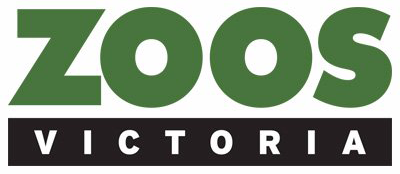

Bogong Moth Tracker
CeRDI is collaborating with Zoos Victoria on an important, multi-year project: a citizen science application to support research and conservation efforts to aid the Mountain Pygmy-possum. The Bogong Moth Tracker ![]() web application is used to track observations of Bogong moths which are an essential food source for the possums.
web application is used to track observations of Bogong moths which are an essential food source for the possums.
Background
A partnership between CeRDI and Zoos Victoria has become firmly established over recent years following the development of technologies that support citizen science initiatives associated with wildlife conservation. Zoos Victoria continues its collaboration with CeRDI through the extension of a multi-year citizen science project.
The Bogong Moth Tracker, which is hosted on the State Wide Flora and Fauna Teams (SWIFFT) website, is an online application that enables members of the public to upload sightings of the Bogong Moth during their seasonal, spring migration from Queensland, New South Wales, and western Victoria to the alpine regions of Victoria. Bogong Moth sightings inform research, providing researchers with data that can increase the understanding of the moth’s migration. In turn, this can assist in identifying factors, such as the availability of food for the Mountain Pygmy-possum.
Bogong Moths are an essential food source for the Mountain Pygmy-possum and reduced food availability is thought to be contributing to the declining population of Mountain Pygmy-possums. The possum is currently listed as ‘Endangered’ under the Commonwealth Environment Protection and Biodiversity Conservation Act 1999. New knowledge from the Tracker will be used to inform decision making about future conservation and recovery efforts. This small marsupial, which is native to south-eastern Victoria, has been included in Zoos Victoria conservation program to support local wildlife under threat from extinction.
Outcomes
Broad ranging benefits are anticipated through this collaborative project including improvements to the development and provision of technologies that encourage and promote citizen science. Information from the data collected by Zoos Victoria will be used to inform conservation efforts for the Mountain Pygmy-possum. Information is also available via key online platforms, including State Wide Flora and Fauna Teams (SWIFFT) and Visualising Victoria’s Biodiversity (VVB) websites.
Technical Features
A fundamental element of citizen science is the opportunity it provides for members of the public to take up an active role in research and innovation. With the help of the public, photos and sightings of the moths are being contributed during the migration season, uploaded, and stored using a format that ensures the data can be exchanged with other databases and technology platforms as required.
It is anticipated that the sharing of findings from the project will encourage existing and new citizen scientists to become active participants in, and recipients of new knowledge about the preservation of endangered Australian wildlife.
Outputs
During the 2019/2020 season, over 600 moth sightings were recorded by the public and uploaded into Moth Tracker, including 160 verified Bogong Moth sightings. Moth Tracker has been re-launched this year to track moth migration for the 2020/2021 season.
In 2020, the public was again encouraged to take photos and provide locational information to accompany sightings of the moths. The data is then exchanged with other databases and technology platforms as required.
Related links
-
VIDEOS
Tracking moths and lights off – involving community in conservation - Darcie Carruthers - Zoos Vic (3:00)
-
NEWS
Harnessing citizen science to save the endangered Bogong Moth - 13 March 2025
Bogong Moths are a crucial food source for Mountain Pygmy-possums.... Continue reading...
Moth Tracker - 17 December 2024
Each spring, endangered Bogong Moths start an amazing migration across Australia to our alpine zone. ... Continue reading...
Help scientists track the migration of Endangered Bogong Moths (twitter) - 5 September 2024
Moth Tracker: Continued public interest - 13 December 2022
Citizen science website supporting initiatives associated with wildlife conservation.... Continue reading...
Zoos Victoria Moth Tracker - 3 November 2020
The partnership between CeRDI and Zoos Victoria has become firmly established over recent years.... Continue reading...
Citizen science project tracking moths for pygmy possum survival - 12 December 2019
CeRDI is collaborating with Zoos Victoria on an important project.... Continue reading...
-
PARTNERS

